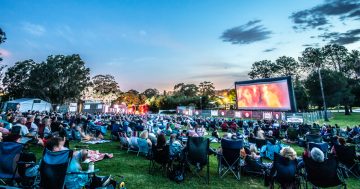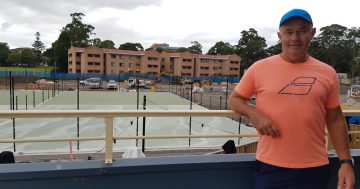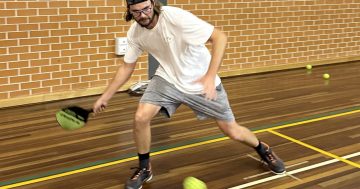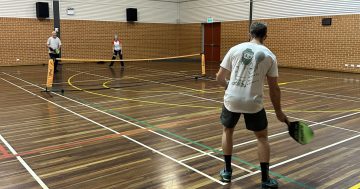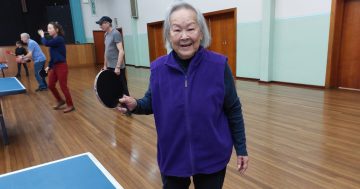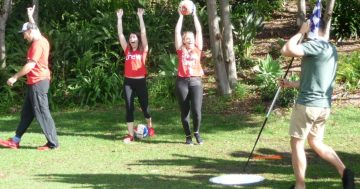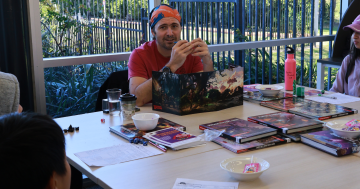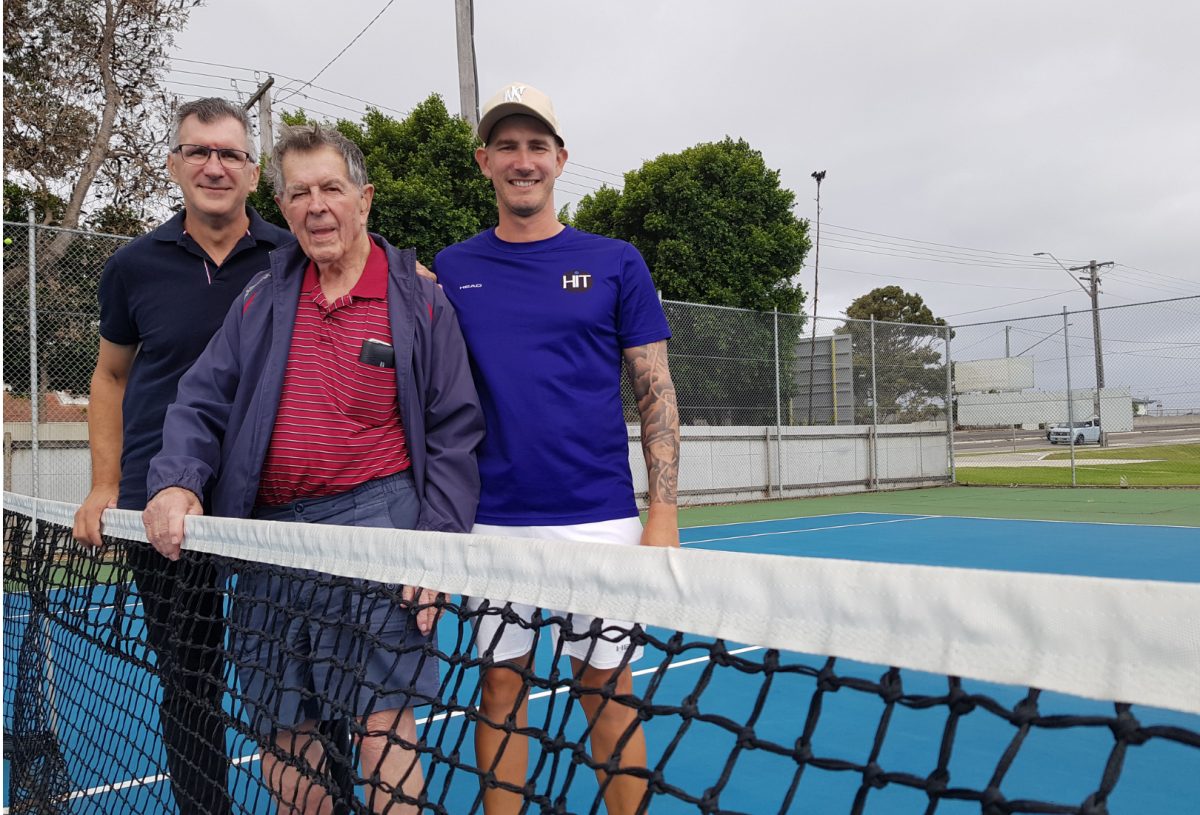
David, Richard “Mick” and Tom Stratton make up one of the many three-generation families involved in tennis in the Illawarra. Photo: Supplied.
Tennis in the Illawarra has seen remarkable transformations since 91-year-old Richard “Mick” Stratton started playing with wooden racquets on loam courts as a teenager in the late 1940s.
Mick is one of many in the Illawarra that has three generations involved in the sport, creating an enduring legacy through playing to holding pivotal roles within the tennis community.
“I played social tennis each weekend with other members of the Wollongong Catholic Youth Organisation on the courts at St Mary’s College,” he said.
Back then, Mick was playing with wooden racquets on loam courts.
“Loam courts had a high maintenance cost and were eventually replaced by the newly developed stabilised loam courts,” Mick said.
“These had a small percentage of cement mixed into the loam to give a hard-wearing surface. Lines were replaced by white plastic strip.
“While these required much less maintenance and were more playable in wet weather, they still had surface wearing problems.”
He said the next innovation was the concrete court, which many Illawarra clubs successfully transitioned to, but problems still existed with suitable surface painting to reduce wear on balls and shoes.
“They also led to injuries, mainly to knees due to running and propping whilst playing,” he said.
“I am one who was told in 1992, when I retired, that I needed a knee replacement.
“The final solution was the synthetic courts that are now evident at most centres. It is a shame they were not developed earlier.”
He said technology played an important role for the player today too, with specially designed clothing and footwear.
“I began playing with a wooden racquet because that was all there was,” he said.
“In later years, I was invited to try the new Yonex aluminium racquet, by Vera Nash, Ern Webb’s tennis saleswoman.
“The difference was incredible. It was lighter overall with better weight distribution and my game improved.
“Now, carbon fibre has replaced aluminium and so the technology continues to improve.”
Despite the technology advancements, he said the increase in leisure activities available in the Illawarra today were sadly taking people away from tennis.
“The clubs that no longer exist in Port Kembla, and other areas, relied on the participation of family groups and they are no longer playing,” he said of their once being five clubs in Port Kembla alone.
“The era of social tennis when you had several family groups playing together, has all but disappeared.
“Some schools promote it as a sporting activity and that is to be commended.”
Mick’s contributions to tennis extended beyond the court, including being secretary/treasurer and later president at the Gilmore Park Tennis Club in West Wollongong, along with treasurer and secretary in the 1960s and 70s and then president in the 90s of the Wollongong District Tennis Association (WDTA).
Through WDTA, he played a key role when Wollongong was selected to stage the Australian Hardcourt Tennis Championships at Beaton Park in the 1960s.
“This was the first time such a prestigious event was held outside a capital city and resulted in a lot of work for me and the WDTA committee and I am pleased that they were a big success,” he said.
“Unfortunately, I do not expect it will ever happen again because of professional tennis.”
His time in tennis also saw him fulfil lifelong dreams.
“I have had many highlights during my career, probably the most memorable was walking on the Wimbledon centre court,” he said, adding that no players or spectators were there.
“I called there on holidays in 1974 and the caretaker was good enough to give my wife and I a guided tour, even though the centre was closed, and he allowed me to walk on the centre court.
“I was also a NSW Lawn Tennis umpire, and I officiated as a linesman for the NSW Hard Court doubles final between John Newcombe and Tony Roache against Fred Stolle and his partner,” he said, trying to remember the partner’s name.
“I then was the central umpire for the ladies singles final between Leslie Bowrey (Turner) and Jan Lehane – two perfect ladies.”
However, his main achievement was the establishment of council’s Wollongong Tennis Court Administration (WTCA) committee, which places individual clubs on equal footing, irrespective of membership size, and gives the clubs responsibility for their own affairs.
“I am happy to now sit back and watch my family carry on with tennis,” he said.
His son David is a WDTA past president and now an executive on the WTCA committee, managing more than 60 Wollongong City Council-run tennis courts.
Grandsons Tom and Matthew were junior age champions, with Tom now a qualified coach at Windang; granddaughter Alyssa Norris was a top junior player, and Alyssa’s mother, Kaye, was on the junior branch subcommittee.
“Tom, David and Alyssa all play in the night competition together,” he said.
“I have ceased all activity in tennis nowadays. I am 91 years old, have bad knees and industrial deafness.
“Fortunately, I still have my driver’s licence and can travel around Wollongong and see what progress is doing.”
With so many multigenerational families engaged in the sport during his time, such as the Chapman family who went on to have three generations of tennis coaches in the Illawarra, Mick hopes to see the next generation continue the game.
While he was proud to have been a member of the WDTA Management Committee that created the facilities at Beaton Park, he was now concerned at the limited usage of them.
“Professional tennis has given a few elite players opportunities to progress, but it does little to encourage the players of lesser ability to get on a court and enjoy good, healthy, all-round exercise,” he said.
“It pains me to see old clubs disappear and their courts turned into play areas, but at least they are still used for recreation.”
Mick is a Life Member of WDTA and Gilmore Park Tennis Club.








